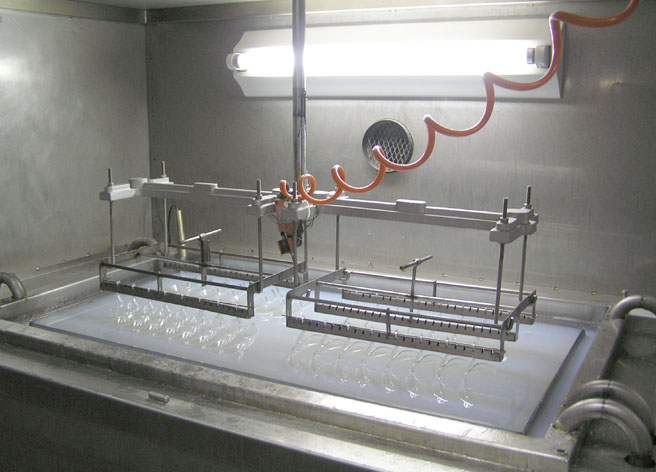Meeting Safety Standards
The UV-AF coating is a differentiator for MCR Safety, which is one of the few remaining companies in the safety space that manufactures its own eyewear.
Doing so allows the company to control the quality of the application of the raw materials to the lenses and how they are cured, and it allows the company to pass on efficiencies and cost savings to the customer. MCR is now moving all its anti-fog eyewear to the UV-AF coating to give customers all the cost benefits, Smith says.
“I live in Memphis, and during the summer if I put our regular market anti-fog glasses on and mow my yard it’s going to fog up in the 95-degree Memphis heat and humidity, and that’s not even a temperature swing,” Smith says. “So, we are doing our customers a service by moving all of our regular market anti-fog lenses to the UV-AF standard to give them a better anti-fog game while keeping their costs the same.”
Another benefit is the fact that the MAX6 premium anti-fog coating meets the most recent edition of the American National Standards Institute’s regulation for safety glasses, safety goggles, side shields, and other eye and face protection. The standard now includes testing, performance and marking criteria for lenses with anti-fog properties, since, as ANSI says, “fogging can impede a wearer’s ability to perform work safely.”
An “X” marking on the lens denotes whether a pair of safety glasses has passed the anti-fog test and can resist fogging.
It’s important to provide your workers with safety eyewear, and even more important to ensure those workers keep wearing it so they remain safe. By ensuring you have the best anti-fog coating possible, you can make sure safety eyewear stays on your workers and isn’t removed to wipe away moisture, leaving them susceptible to injury in the workplace.
How are you making sure your employees keep wearing eye protection at work? Share your thoughts in the comments below.










Talk to Us!
Leave a reply
Your email address will not be published. Required fields are marked *